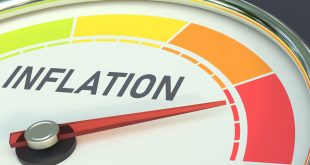The US dollar’s recent retreat has stirred global markets, spotlighting tensions in currency pairs, gold prices, and the Canadian dollar’s struggle to hold ground. A ceasefire in the Middle East and cautious remarks from Federal Reserve’s Jerome Powell have shaped this shift, raising questions about what lies ahead for monetary policy and safe-haven assets. This essay argues that the greenback’s pullback reflects deeper uncertainties, urging investors to watch key economic signals and geopolitical moves. The following sections unpack these dynamics, offering a clear-eyed view of the forces at play and what to expect next.
US Dollar Under Pressure
The US Dollar Index (DXY) marked its third consecutive daily decline, slipping to multi-year lows near 97.70. Mixed US Treasury yields and a brighter risk sentiment have weighed on the greenback. On June 26, key data releases—including final Q1 GDP growth, Durable Goods Orders, Chicago PMI, Pending Home Sales, Wholesale Inventories, and Initial Jobless Claims—will offer clues about the US economy’s health. Speeches from the Fed’s Barkin, Hammack, and Barr could further clarify the Fed’s stance after Powell’s cautious tone. Investors should brace for volatility if these indicators signal uneven recovery or tighter policy.
Currency Pairs on the Move
Major currency pairs have capitalized on the dollar’s weakness. EUR/USD climbed to new 2025 highs above 1.1650, driven by the greenback’s retreat despite a quiet European data calendar. The ECB’s De Guindos, Schnabel, and Lagarde’s remarks will draw scrutiny for hints of diverging policy paths. GBP/USD pushed past 1.3655, fueled by dollar losses, with the CBI Distributive Trades and BoE’s Bailey and Breeden speeches in focus. USD/JPY, after two days of losses, neared 146.00, with Japan’s weekly Foreign Bond Investment data as the sole release. AUD/USD reclaimed 0.6500, supported by dollar weakness, ahead of Australia’s Housing Credit and Private Sector Credit figures on June 30. These shifts underscore the dollar’s vulnerability and the need to monitor central bank rhetoric.
Gold and Oil in the Spotlight
Gold futures rose to $3,333 per ounce, up from $3,323, buoyed by the dollar’s decline and lingering geopolitical unease. Despite a calmer Middle East, concerns over European gold reserves held in Federal Reserve vaults—valued at $245 billion for Germany and Italy—have fueled safe-haven demand. Germany (3,352 tons) and Italy (2,452 tons) hold the world’s second- and third-largest gold reserves, trailing the US (8,133 tons). Silver also rebounded past $36.00 per ounce. Meanwhile, WTI crude hovered near $65.00 per barrel, down $12 from monthly peaks, as Russia and OPEC+ plan to boost output. Lower oil prices could pressure commodity-linked currencies like the Canadian dollar.
Canadian Dollar’s Stagnation
The Canadian dollar (CAD) held steady near 1.3700 against the US dollar, snapping a brief two-day gain. Limited CAD data, following a lackluster CPI inflation print, leaves traders awaiting Friday’s monthly GDP, forecast to flatline at 0.0% MoM. USD/CAD remains pinned to 1.3700, with technical indicators hinting at a potential greenback rebound. Falling oil prices, tied to OPEC+ output hikes, could further weigh on the loonie, given Canada’s oil export reliance. CAD traders face a quiet week but should prepare for downside risks if global crude markets weaken.
The dollar’s slide reflects a fragile balance of economic and geopolitical forces. Investors must stay vigilant, tracking central bank signals, data releases, and commodity trends to navigate what’s next. A stronger dollar could reemerge if US data surprises or geopolitical calm fades, but for now, the greenback’s retreat sets the stage for a pivotal moment in global markets.

 Noor Trends News, Technical Analysis, Educational Tools and Recommendations
Noor Trends News, Technical Analysis, Educational Tools and Recommendations




